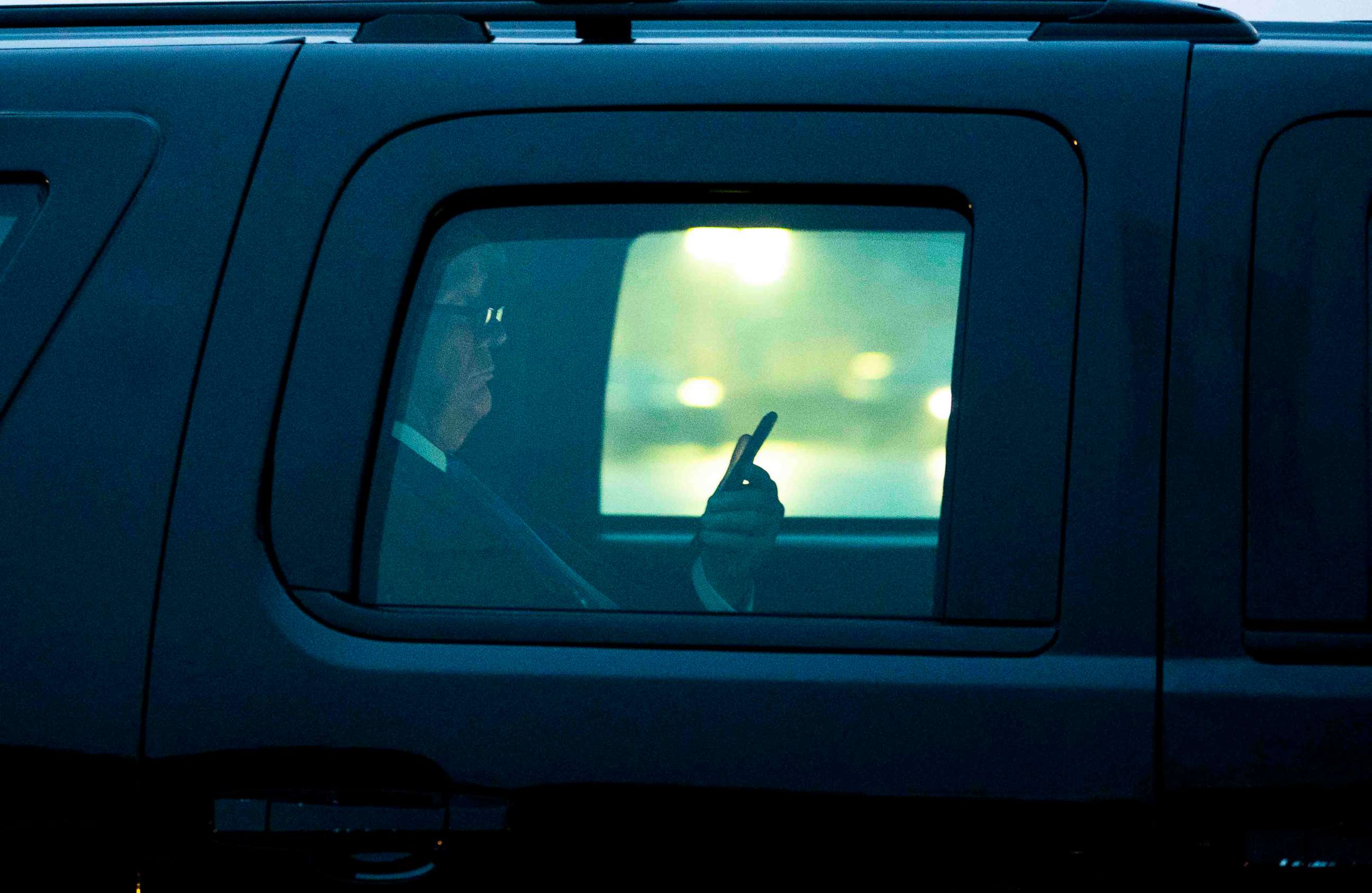Twitter's 1st 'manipulated media' post? It came from the White House.
Dan Scavino, an assistant to the president, tweeted an edited clip of Joe Biden.
Twitter has for the first time labeled a post "manipulated media." And it came from the White House.
On March 7, at 8:18 pm EST, Dan Scavino, assistant to the president and director of social media at the White House, tweeted an edited clip of a speech that Joe Biden gave in Kansas City, Missouri. It went out from his personal Twitter to more than 700,000 followers.
President Donald Trump retweeted the edited video later that day, and it's now received more than 6.7 million views.
The clip is edited so that the Democratic candidate appears to endorse Donald Trump's reelection. Biden appears to say, "We cannot win this reelection. We can only elect Donald Trump."
In fact, what Biden actually said in his speech was, "We want a nominee who will bring this party together ... because we cannot get reelect ... we cannot win this reelection ... excuse me ... we can only reelect Donald Trump if in fact we get engaged in this circular firing squad here. It's gotta be a positive campaign, so join us."

This is not the first time Scavino has tweeted manipulated video. He previously tweeted manipulated video of former candidate Michael Bloomberg, which Twitter told ABC News likely would have received a similar labeling had the policy been in place at the time.
"I can confirm that this Tweet was labeled based on our Synthetic and Manipulated Media policy," a Twitter spokesperson told ABC News.
Twitter announced the policy Feb. 4 with a video saying, "We're making Twitter a safer place for conversations." It went into effect on March 5. "You should be able to find reliable information on Twitter," the company added. "That means understanding whether the content you see is real or fabricated and having the ability to find more context about what you see on Twitter."
Twitter considers content on the platform from three angles when choosing how to label it:
The label "manipulated media" appears below the video with a circled blue exclamation mark. It links to a Twitter Moment, where a user can get more information and context.
The introduction of Twitter's first label has not been seamless. The tweet wasn't labelled until late Sunday, by which time the edited video had reached more 5 million views on Twitter, according to The New York Times. Due to a technical error, the label is not currently showing up when a user opens Dan Scavino's original Tweet and is only visible if a user sees the Tweet in their timeline. It appears under some users' retweets but not others'. Twitter told ABC News the company is working on a fix.

"This will be a challenge and we will make errors along the way -- we appreciate the patience," Twitter wrote in a blog post about the new policy.
In response to Twitter's decision to label the video, Scavino, Trump and other members of the White House doubled down. Trump retweeted Scavino, who wrote, "The video was NOT manipulated," on Twitter. "Sorry! He actually said this. Not manipulated," tweeted Gary Coby, the digital director for Trump's reelection campaign.
Twitter's policy comes amid growing pressure on social media platforms to stop the spread of false or deliberately misleading information on their platforms, especially as the pressure of presidential campaigning increases. In May 2019, Facebook and Twitter were both widely criticized for declining to remove a manipulated video of House Speaker Nancy Pelosi that was slowed down to make it appear that she was slurring.
By Monday, Facebook had also taken action to give users more context on the edited Biden video. On Scavino's Facebook page, a notice over the video read: "Partly false information; Checked by independent fact-checkers," with links to news articles about it. If you try to share the video, a pop-up tells you that it contains "false information" and notifies you that a notice will be added to your post if you do decide to share. Donald Trump had also shared the video on his Facebook page, captioning it: "I agree with Joe!" It too now includes a disclaimer. However, it appears in other users posts elsewhere on Facebook without any kind of disclaimer.
"Fact-checkers rated this video as partly false, so we are reducing its distribution and showing warning labels with more context for people who see it, try to share it, or already have," a Facebook spokesperson told ABC News. "As we announced last year, the same applies if a politician shares the video, if it was otherwise fact-checked when shared by others on Facebook."
In a November 2019 blog post, Facebook wrote in relation to politicians: "We won’t allow them to share content that has previously been debunked as part of our third-party fact-checking program. And we of course take down content that violates local laws."
Facebook uses third-party fact checkers to investigate content on the platform that may be misleading or false. Facebook uses automated signals as well as feedback from users, to identify potentially false content and then sends the content to fact-checkers for review.
When asked, Facebook couldn't explain the two-day delay but raised the point that fact-checking partners are independent and it's at their discretion when to fact-check content.



